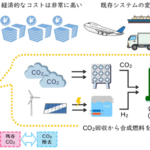2023-07-18 オーストラリア連邦研究会議(ARC)
◆これは、ホール輸送材料(HTM)の設計によるもので、軽量で放射線に強く、商業用途に適した超薄型サファイア基板を使用しました。これにより、低コストで効率の高い宇宙用ハードウェアの電力供給に有望な候補となる可能性があります。
<関連情報>
- https://excitonscience.com/news/houston-we-have-solution-sun-can-repair-solar-cell-defects-vacuum-space
- https://onlinelibrary.wiley.com/doi/full/10.1002/aenm.202300506
7MeV陽子線照射後の極薄基板上のペロブスカイト太陽電池の安定性と回復性に及ぼす正孔輸送材料とそのドーパントの影響 Effect of Hole Transport Materials and Their Dopants on the Stability and Recoverability of Perovskite Solar Cells on Very Thin Substrates after 7 MeV Proton Irradiation
Shi Tang, Stefania Peracchi, Zeljko Pastuovic, Chwenhaw Liao, Alan Xu, Jueming Bing, Jianghui Zheng, Md Arafat Mahmud, Guoliang Wang, Edward Dominic Townsend-Medlock, Gregory J. Wilson, Girish Lakhwani, Ceri Brenner, David R. McKenzie, Anita W. Y. Ho-Baillie
Advanced Energy Materials Published: 22 May 2023
DOI:https://doi.org/10.1002/aenm.202300506

Abstract
The drastic reduction in launch and manufacturing costs of space hardware has facilitated the emergence of “commercial” space. Radiation-hard organometal halide perovskite solar cells (PSCs) with low-cost and high-efficiency potentials are promising for space applications.High-efficiency PSCs are tested with different hole transport materials (HTMs) and dopants on 175µm sapphire substrates under 7MeV-proton-irradiation-tests at accumulated fluences of 1011, 1012, and 1013 protons cm−2. While all cells retain >90% of their initial power conversion efficiencies (PCEs) after 1011 protons cm−2 irradiation, PSCs that have tris(pentafluorophenyl)borane (TPFB) as the HTM dopant and poly[bis(4-phenyl)(2,5,6-trimethylphenyl) amine (PTAA) or PTAA:C8BTBT (C8BTBT = 2,7-Dioctyl[1]benzothieno[3,2-b][1]benzothiophene) as the HTM are more tolerant to higher-fluence radiation than their counterparts with the lithium bis(trifluoromethanesulfonyl)imide (LiTFSI) dopant and the 2,2′,7,7′-Tetrakis[N,N-di(4-methoxyphenyl)amino]-9,9′-spirobifluorene (Spiro-OMeTAD) HTM. Radiation induces fluorine diffusion from the LiTFSI dopant toward the perovskite absorber (confirmed by depth-resolved X-ray photoelectron spectroscopy) introducing defects. Radiation-induced defects in cells with the TPFB dopant instead are different and can be “annealed out” by thermal vacuum resulting in PCE recovery. This is the first report using thermal admittance spectroscopy and deep-level transient spectroscopy for defect analyses on proton-irradiated and thermal-vacuum-recovered PSCs. The insights generated are expected to contribute to efforts in developing low-cost light-weight solar cells for space applications.


